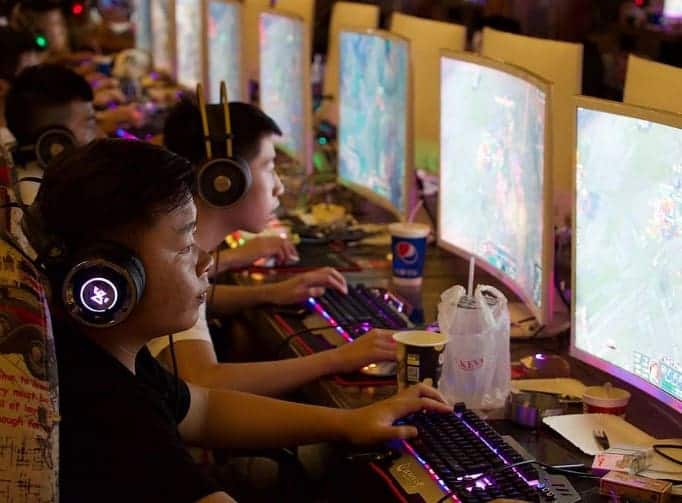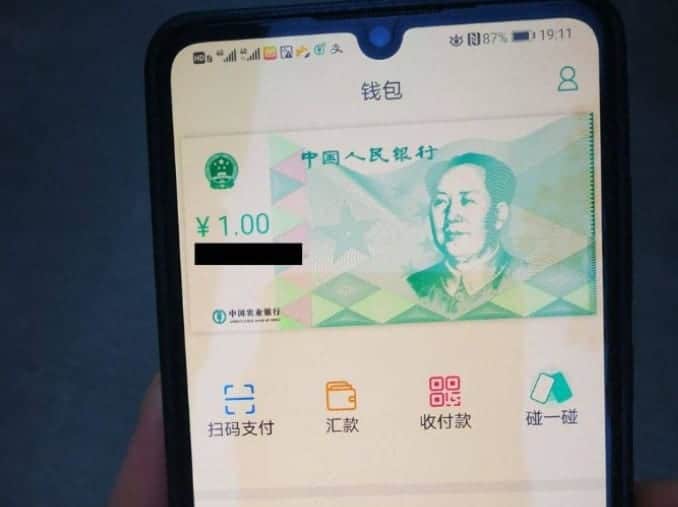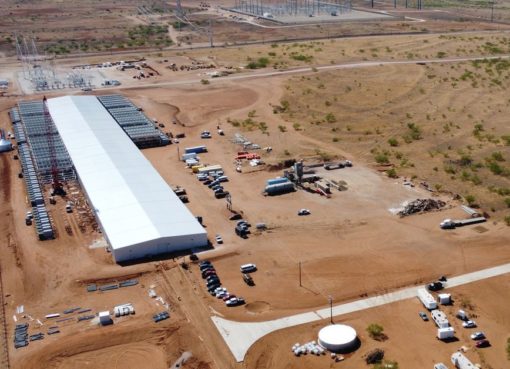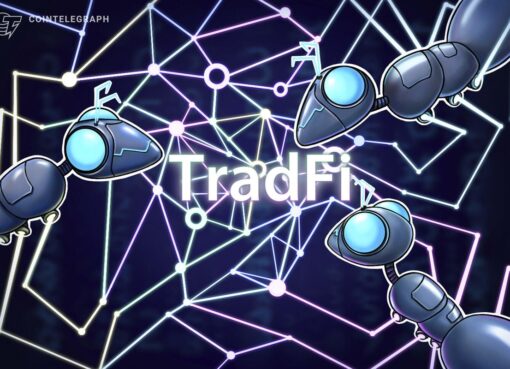In this issue
- Digital Dollar Project lays out path for an American CBDC
- Electronics giant LG now part of Hedera Hashgraph
- Enjin plugs blockchain into Minecraft
- In China: blockchain as cure for gaming addiction, whether DCEP is ready to launch
- VC highlights in Singapore, the Philippines and Japan
From the Editor’s Desk
Dear Reader,
Protests and Covid-19 now seemingly go hand in hand in hot spots around the world. The Current Forkast is noting the red flag warning, stoked by groundswells of frustration in both the West and the East. Amidst this backdrop, we find two very different approaches to a central bank-backed digital currency defined by political ideology. One from China, and the other from the United States.
The Digital Dollar Project is the U.S.-based initiative co-led by the Digital Dollar Foundation (led by ex-CFTC chairman Chris Giancarlo, see here for my candid interview on Forkast.News) and Accenture. This privately-led initiative is doing the gargantuan work of educating policymakers and politicians in Washington D.C. on the need for a digital version of the greenback. This complex idea, however, requires political will before anything can materialize and be made substantive in the real world. The idea requires the U.S. government, with full integration in the Federal Reserve, to launch its own version of a central bank-backed digital currency. The one sticky point, as with any idea, is execution. In this case, it would require an enormous amount of political capital and popular support. And right now, who is paying the kind of attention this project requires? Certainly not right now as the U.S. continues to fight the ravages of Covid-19 and also at this moment, the ravages and wounds of racial disparities bursting wide open. But what the Digital Dollar Project has (as is the specific strategy from Giancarlo’s point of view) is the time to get this right. The U.S. remains economically globally dominant. It has U.S. dollar hegemony. It holds the roots of international systems (such as Swift, Fedwire and CHIPS) used around the world. Giancarlo argues, this is not a race… there should be a methodology of jurisprudence in getting the digital dollar system right. And it must hold the very ideals, values and morals of a democracy within that system.
Contrast this with the trials in a handful of cities in China, with alleged video leaks of the DCEP app in use. The People’s Bank of China says it is testing out its new digital currency technology, but no official launch as of yet. At least it understands that, when it comes to money, it must serve the people easily and efficiently. There is no room for political mistakes here. China’s economy is already under duress with U.S.-China trade tensions as well as Covid-19. The PBOC must get this right for its own citizens as well as preserving the potential to use its DCEP renminbi beyond its borders with other trading partners. However, under Communist China, the state-issued digital currency takes on ominous tones as it is expected to serve the interest of the central government. The ideology still threatens to undermine the adoption of the digital RMB.
Ideology is baked into the digital imprint of how a currency will be used. Political systems and ideologies are interesting concepts to take into consideration when comparing and contrasting the digital currency systems being proposed right now. There is also plenty of criticism to go around. But at the end of the day, could this potentially point to a third system? One that is truly decentralized. What we’re witnessing now is frustration expressed in political aggression and violence. Technology might provide some of the tools, but the answers must be authored by the people.
Until the next time,
Angie Lau,
Founder and Editor-in-Chief
1. Digital dollar white paper
By the numbers: digital dollar white paper — over 5,000% increase in Google search volume.
The Digital Dollar Foundation and Accenture release a white paper proposing a “third format of currency.” The proposal highlights a token-based digital representation of money that would reflect the characteristics of a digitized Federal Reserve note. Transactions would be recorded and tokens authenticated by a digital ledger.
- “If the United States brings those values to bear in the future of digital money, the United States is a winner. If it does not, and other values are brought to bear and the United States is not active in countering that, then the United States is a loser,” says the head of the Digital Dollar Foundation and former Commodity Futures Trading Commission chair J. Christopher Giancarlo, in a Zoom interview with Forkast.News.
- In an earlier interview, Digital Dollar Project director David Treat, who is also a senior executive at Accenture, calls the CBDC a “race between countries” and says the U.S. needs to upgrade its financial infrastructure to remain competitive.
Forkast.Insights | What does it mean?
Those expecting that a “digital dollar” in the U.S. would usher in a cashless society, where most transactions will be done through these newly minted currencies made up of bits and bytes, will likely be disappointed.
A “digital dollar,” or a CBDC, has a lot of merit and potential — within the back end of the country’s financial infrastructure. As Forkast.News reported when the Digital Dollar Project’s white paper was released last week, the big value generator for this technology would be the efficiency gains and cost savings in the gross settlement process, as large financial institutions would no longer have a monopoly on this. As the white paper explains, the technology would “facilitate broader, more diverse access for institutions to make large value payments.” Intermediaries would be bypassed thanks to the distributed ledger used, and this would instantly create value just for the fees and transaction hassles saved. For many users, they may not see much difference between a CBDC world and a non-CBDC world. Transactions would happen a bit faster, fees would be less (or maybe the same if banks pocket the difference), but it would likely all exist in the same apps and financial ecosystems they are already familiar with.
Although a CBDC for daily transactions might be an easy sell in China, it could be a tougher pitch to government-averse Americans, who already have a system — between the likes of Venmo, PayPal, and Fedwire — that is not fantastic, but good enough. Billionaire investor Tim Draper, a critic of CBDCs, predicts they will flop as the value of any national currency — digital or not — is reliant on the “politician on the top” and subject to political whims. The USD is the world’s preferred currency for transaction settlement, followed by the Euro. The RMB is less popular than secondary currencies like the GBP, AUD or even CAD when it comes to foreign exchange turnover, according to the Bank of International Settlements. The fact that there’s not a whole lot of movement on that chart shows the international regard for and intrinsic value of these currencies. Putting a fancy new software layer on top of a currency isn’t going to dramatically change this. CBDCs as an idea have merit, but in the U.S. there may not be enough political cohesion or sense of urgency to get it done.
2. LG joins Hedera Hashgraph

By the numbers: LG — 1,250% increase in Google search volume.
LG is tapping into distributed ledger technology (DLT) by joining the Hedera Hashgraph Governing Council. LG is only the second Asia-based company, following Japan’s Nomura, to join Hedera Hashgraph. The council now consists of 14 industry leaders, such as Google and IBM.
- LG’s addition boosts Hedera Hasgraph’s goal of achieving 39 members that are global organizations. LG is also the first appliance manufacturer in the group.
- “Distributed ledger technology holds the potential to improve customer value and allow enterprises across many sectors to offer new services that take advantage of the trust, security and speed that it provides,” LG Electronics Senior Vice President Cho Taeg-il said in a statement.
Forkast.Insights | What does it mean?
LG’s buy-in to Hedera Hashgraph, which used to be telecom-heavy, shows that DLT has serious potential when it comes to supply chain management for consumer electronics.
The global supply chain is intricate and complex. Firms need to know the exact breakdown of parts in their devices, as this will allow them to stay on top of issues such as how sanctions might impact their ability to export to a specific market, or part failures and costs associated with maintaining warranties. A few years ago, Intel invented the market for a conflict-free supply chain, promising that its processors, with rare earth minerals like coltan and neodymium often found in Africa, would be free of raw materials harvested in support of warlords or with labor from prisoners of war. Allegations over Supermicro’s insecure supply chain brought awareness to the intersection of geopolitics and IT security. With Hedera Hashgraph, LG could provide a stronger guarantee to its customers the integrity of its supply chain.
Aside from the potential found in the application of this technology, it should be pointed out that this is not a blockchain project but rather, distributed ledger technology. It seems that some of the more exciting projects that require speed and scale have bypassed blockchain completely and have gone for DLT — a similar technology in principal but fundamentally different. A DLT is a decentralized database managed by multiple participants across multiple nodes. Whereas blockchain is a specific type of DLT where transactions are recorded with an immutable cryptographic signature called a hash. DLTs are used for CBDCs, which is why they are often said in the same breath as cryptocurrency (but the two should not be conflated). This should provide blockchain companies with the incentive to double down on their efforts to build blockchain platforms that emphasize scale and speed.
3. Enjin brings blockchain to Minecraft

By the numbers: EnjinCraft — 5,000% increase in Google search volume.
Blockchain enters the world of playing blocks as Enjin introduces its new EnjinCraft plug-in to the world-popular video game, Minecraft. Players are now able to link blockchain wallets to their game servers as well as tokenize in-game items through a debugging tool known as console commands. Minecraft is currently enjoyed by 126 million monthly players.
- According to Enjin, its early 2016 Minecraft non-blockchain plugin DonationCraft was downloaded 5.1 million times.
- Enjin previously introduced its Multiverse Program, which allows players to transfer and trade in-game digital assets across different Enjin games.
Forkast.Insights | What does it mean?
Game developers are always looking at new ways to monetize their platform and provide a convenient payment method for gamers. Blockchain is the latest version of this. The business model for games has changed dramatically during the last few years, with a preference for recurring revenue streams from in-game purchases versus the one-time transaction of buying a game.
What to look for from this is the adoption crypto as a payment method. Payments by credit cards are popular in markets where there’s a high penetration rate for cards. In developing markets, payment by mobile phone billing is the preferred method. Bitcoin and crypto can fill in the market gap that mobile phone billing currently occupies.
Many companies that once offered crypto as a payment method have backed off because of low pickup from consumers. But this will be different for gaming: micro transactions for digital items are a category that’s unique, and different from retail goods. Let’s check back in a few months to see if gamers are buying in and adopting this as a payment alternative.
4. In China: DCEP’s readiness, and a remedy for gaming addiction

During the annual plenary session of the National People’s Congress, a delegate proposed the creation of a national blockchain-based anti-addiction platform for online games.
- According to Li Xiuxiang, the delegate from Jiangxi Province, blockchain and distributed ledger technology could be used to collect information on online gamers and their playing time. Using the same chain and online platform, all gaming companies could record the number of hours that players spend on online games. She suggested that government regulators as well as parents can view the data online and take appropriate actions, depending on the circumstances.
- In November 2019, the State Press and Publications Administration issued the “Notice on Preventing Teenagers From Getting Addicted to Online Games.” Following the notice, NetEase and Tencent, two giant gaming companies in China, announced their own anti-addiction systems for over 80 games. However, online time for different games and different companies are counted independently, and gamers can easily circumvent the corporate anti-addiction system restrictions by installing multiple games.
Forkast.Insights | What does it mean?
Online gaming addiction is a serious problem in China, and the government has taken considerable steps to address this, including categorizing it as a public health crisis, and, critically, creating a nationwide gaming curfew for minors. With support from the gaming industry, the National Press and Publication Administration’s rulebook says people under age 18 are banned from playing online games between 10 p.m. and 8 a.m. Minors also are not permitted to play more than 90 minutes per day on weekdays and three hours per day on weekends and holidays. But this playtime is not tracked across different games, as each game is a separate app.
Blockchain technology could be a perfect solution for bridging these gaps by creating a cross-platform identity that needs to be authenticated before each game begins. This likely would be some sort of token system that would allow for data portability between games and devices, whether the gamer is on a mobile device or a PC. The problem with leaving this up to corporate developers to implement revolves around data being siloed and profit incentives; competing companies have no incentive to share user data with each other, nor is it to any company’s financial interest to actually succeed at reducing game play time.
Such a system would also need to be tied to another form of unique authentication, such as facial recognition or a fingerprint scanner, to ensure that the user isn’t getting extra playtime by using someone else’s account.
The ability to securely port and authenticate data is one of blockchain’s fundamental strengths. This is where the fundamentals of tokenization and public/private keys would work well together. The stakes aren’t as high as in the financial or medical sectors, but should authorities in China pull this off, it would be another great “reference customer” for the technology.

The highly-anticipated China’s digital renminbi, DCEP — which is currently being pilot tested in four cities — is not yet ready for launch, says the central bank’s top official.
- Yi Gang, the governor of the People’s Bank of China (PBOC), said: “there’s no timetable for an official launch (of digital renminbi)…. The trials are just routines of the developing process and don’t mean the official launch of the digital renminbi.” He also added that PBOC still needs more time and trials to verify “the reliability of theories, stability of the system, usability of its functions, convenience of the process, applicability in different scenarios and the ability to control risks.”
- But he confirmed that PBOC has been working with giant commercial banks and institutions since the end of 2017 to develop DCEP’s functions.
- This announcement has been reported nearly 1,000 times in China’s news outlets. The news also gained heavy traffic on social media, with over 10,000 likes and 1,300 comments for the interview of Yi Gang, published by Ecns.cn’s official Weibo account. Most of the comments ask, what is DCEP and what is the difference between DCEP and popular digital payment apps like Alipay and WeChat Pay.
- Separately, a 15-second video showing off a DCEP wallet from the Agricultural Bank of China was leaked on May 29, but the authenticity of the video is still in question.
- From the video, the app looks similar to the screenshots of ABC’s DCEP digital wallet circulated widely online in April, demonstrating functions that include digital currency exchange, digital wallet management, digital currency transaction record, and basic payment and collection functions.
Forkast.Insights | What does it mean?
When DCEP launches, a lot will need to go right for it to have buy-in. This platform is being launched in the ultimate “frictioned” environment as, for now, it replicates and attempts to replace Alipay/WeChat pay in functionality. Asking users to swap their existing and perfectly fine payment apps for something new and without an obvious value-add presents a large amount of potential “friction” that could greatly reduce the new technology’s popularity and success.
In some ways, Libra is an attempt to replicate parts of the Alipay/WeChat pay “superapp” environment that gives users plenty of places to spend their money without leaving the walled garden. Although that sort of monetization strategy would be welcomed by Facebook investors seeking new ways to boost the company’s revenue per user, the real jewel in the company’s crown would be cross-border payments tied to a single coin. A global currency to both rival the dollar and push down any sort of competing currencies.
But immense global regulatory pushback killed Facebook’s original ambitions. And with that, the PBOC’s need to get DCEP launched as soon as possible. After all, as Li Lihui, former president of the People’s Bank of China pointed out, one of the biggest concerns of the bank are barriers that prevent the internationalization of the RMB. “Supranational currencies” that don’t have a clear country label are one of them.
So with Facebook pivoting away from a singular digital currency aimed at disrupting the remittances market, there was no point in expediting the launch of DCEP. Its real value is as a tool to compete against the USD in regional remittances, and it has a long way to go before the RMB can begin to challenge the USD in that regard. A launch can wait so that it’s perfected.
5. VC in Japan, Singapore and the Philippines
LayerX — Japan, seed, US$28 million
The Tokyo-based blockchain startup announced that it had closed a funding round of $28 million earlier this week in venture capital, marking its first funding round. LayerX bills itself as a software consultancy and integrator, focusing on inserting blockchain technology into the corporate software stack. It currently maintains two agreements with other Japanese companies, including Mitsui and Company, an asset management firm focused on third-party financial transactions, such as the sales of securities. The company’s CEO, Yusuki Enomoto, has spoken at Japanese blockchain conferences as a noted speaker.
GoBear — Singapore, venture, US$17 million
Adding to the product comparison market for the financial sector, GoBear announced it had closed a second round of funding of $17 million. This brings their total funding raised to $97 million, all of which was announced in the past month. Multinational insurance firm Aegon and Dutch VC firm Walvis Participaties led the funding rounds. The company promises a new approach for consumers to “compare loans, credit cards and all types of insurance” through a single platform. It currently operates in Southeast Asia.
Advance Tech Lending — Philippines, seed, undisclosed
Filipino fintech firm Advance Tech Lending, which specializes in providing instant short-term loans for businesses and consumers, announced an undisclosed amount of funding. High-profile entrepreneurial firms, such as Dymon Asia Ventures and Accion Venture Lab, participated in the round. The loans provide benefits across the board, with instant payments for consumers and payday leverage for businesses. In contrast to payday lenders, which might take advantage of a lack of consumer protections in developing markets, loans are unique in that they do not charge interest, but a transactional fee.
Forkast.Insights | What does it mean?
With these funding rounds, companies are attempting to capitalize on stable and predictable business models. LayerX provides corporations with quasi-consultory blockchain expertise, while GoBear strives to compete in the saturated insurance comparison market. And to that, Advance Tech Lending stands in the proven need for payday loans and business payroll liquidity without the need to engage with unscrupulous money lenders. Perhaps the firm is looking at the success of challenger banks and startup lenders in the U.S., demonstrating that there’s still a market to be had and money to be made without charging predatory interest rates. It’s a short snapshot of firms. What’s keen here, though, is the fact that it’s somewhat typical. It’s not dependent upon the virus. Or unrest. In chaos, crypto is business as usual.




